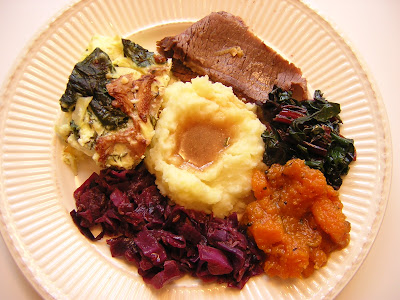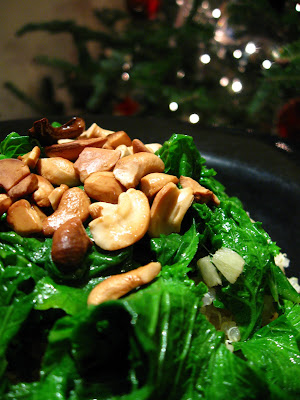
These days, most people would think nothing of going into a supermarket in December to pick up fresh strawberries, tomatoes and Brussels sprouts. Not too long ago, we did just that. But as we started to increasingly buy local and eat seasonally, we realized it's not possible to have those three things together. Not only that, but on some level it's not even desirable - when you regain a sense of seasonality, you get excited when you see the first strawberries appear in spring, and you wait anxiously through June and July for the first colorful heirloom tomatoes. Things taste better when you only eat them while they're at their best. Who needs strawberries all year?
When you eat seasonally, you also quickly come to understand food preservation in a whole new way. Jam isn't just a dessert - it's a way of preserving precious summer fruits when they're at their most bountiful. Same with pickling, which used to be one of the only ways to make fragile summer veggies last into the wintertime. All the myriad methods of food preservation actually only operate on a few different mechanisms, so we thought we'd share them here:
SUGAR
Adding a certain quantity of sugar to a food will inhibit the growth of harmful bacteria. That's the basic idea behind all jellies, jams, "candied" fruits, and similar preserves - which is why they have to contain a certain percentage of sugar in order for them to be stored safely outside of refrigeration. (All the traditional Christmas desserts that contain candied fruits make a lot more sense when you realize that was the only fruit people had around during the winter.)
SALT
Large quantities of salt will also preserve foods - thus salted fish like cod and all manner of pickles (sometimes with an assist from vinegar, but not always). In the industrial food system "pickle" is treated as more or less synonymous with "cucumber," but basically any vegetable can actually be pickled. These days at the greenmarket you can find pickled beets, pickled green tomato, or pickled asparagus. Salt curing is also the mechanism for preserving hard cheeses like Parmesan, which keep much longer than softer types.
FERMENTATION
The basic theory of fermentation is that by encouraging the growth of certain good types of bacteria, you can inhibit the growth of the bad ones. This produces all types of tasty foods like yogurt, miso paste and soy sauce, and of course wine.
DRYING
Plenty of foods are dehydrated for storage, including seaweeds, fruits, seeds and herbs, legumes, and even meat (that's what beef jerky is, after some marination). When foods are completely dried out, bacteria can't grow in them and cause them to spoil. Apparently these days you can buy small home dehydrator units over the internet to make your own dried fruit slices.
SMOKING
Not as important as some of the others, but smoked salmon is tasty enough to merit its own entry on this list. Many other fishes and meats are smoked as well. Lots of things that are smoked are simultaneously salt-preserved.
FREEZING
Ever since World War II, freezing has been a dominant form of food preservation in the US - not always with good results. Freezing slows down the chemical activity in a food until it almost grinds to a halt, making it last much longer before spoiling. This is obviously a more energy-intensive form of preservation than the others, which makes it somewhat less sustainable, but it can have definite nutritional and taste advantages. When turned to purposes other than processed instant dinners, freezing can be a force for good.






























